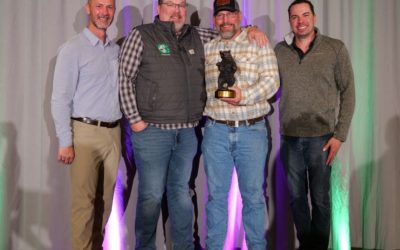Sustainable Forests Report Has Mixed Results
Released in September, the “National Report on Sustainable Forests, 2020” from the U.S. Dept. of Agriculture (USDA) and Forest Service (FS) shows both good and challenging trends as the nation’s forestland owners seek sustainable ownership and management options. The fourth such effort since 1997, the report is 60 pages.
Following are excerpts from the report:
• Forestland area in the U.S. has increased slightly over the past century to 765 million acres. Yet modest long-term forest expansion tapered off in recent years as net increases in forest area in the South, North, and Alaska regions were offset by net decreases in the Pacific Coast and Rocky Mountain Regions.
• At the national scale, forests continue to grow more wood than is removed or lost to mortality. Timberland growing stock is nearly evenly distributed between hardwood and softwood species, with about 10% (102 billion cubic feet) of total growing stock attributed to planted forests. Increasing tree mortality associated with wildfire, insect infestation, and drought at local and regional scales, particularly in the Rocky Mountain Region, have led to a slowing in national net growth rates, even as removals (from harvesting or land clearing) have decreased since peak average annual harvest rates in the late 1980s.
• Disturbances (wildfire, insects, and others) are often a vital part of healthy forest ecosystems, but the increasing extent and severity of biotic and abiotic forest disturbances pose increasing challenges to ecological, economic, and social dimensions of forest sustainability. Over the past 20 years, wildfire intensity and area burned have trended upward at the national scale. Although national-scale, insect-induced tree mortality has decreased since spikes in the 2000s, insects remain the principal biotic cause of tree mortality in the U.S., particularly in the Pacific Coast and Rocky Mountain Regions. The increased temperatures and drought attributed to climate change, combined with increasing forest density and insect-induced tree mortality, can create the conditions for increasing wildfire severity and extent.
• Although forests continue to serve as a carbon sink at the national level, forests in several states in the Intermountain West are producing net carbon emissions at the state scale largely owing to forest disturbance activity. Forestland, harvested wood products (HWP), woodlands, and urban trees represent the largest net carbon sink in the U.S., nationally offsetting around 10–15% of total domestic emissions annually.
• Forest-protected rivers and streams are in relatively good condition in the U.S., and previously high levels of acidification observed in forest soils have continued to decrease in recent years. Best management practices (BMPs) for forests focused on reducing the negative impacts of forest management on water and soil resources are widely implemented in the U.S. and have been shown to be effective. Although nationwide assessments of water bodies paint an overall picture of poor condition, there is evidence that forest-buffered public water supplies are in good condition.
• The wood industry in the U.S. has rebounded with the recovery in the broader economy over the past decade; however, this rebound had been strongest in portions of the South Region and wood production levels remain below their peak. Per capita consumption of wood and paper products decreased 21% since 1965 and production levels are still far below their peak in the late 1980s. Employment in the wood and paper products sectors declined 40% since its most recent peak in 1998.
• Forest recreation is a principal forest ecosystem service but may be increasingly constrained by disturbances (notably wildfire and smoke) and maintenance backlogs on roads, trails, and facilities on Federal lands. Revenues from forest-based ecosystem services have continued to increase, and non-timber forest products remain important sources of revenue but are more difficult to track over time.
• Sustainable forest management is pursued in the U.S. through an expanding range of legal, institutional, and economic approaches developed and applied across multiple scales, ownerships, and actors. These approaches address the ecological, economic, and social dimensions of forest sustainability and increasingly rely on forest-focused collaborations and partnerships that share a common recognition of the importance of forest restoration, wildfire risk reduction, multiple uses, and local forest-based livelihoods. Institutional capacity for traditional forest management activities has declined in some areas, notably forestry research.
Latest News
CBI Presents 2024 Dealer Awards
CBI Presents 2024 Dealer Awards CBI celebrated the exceptional achievements of its top distributors at the 2024 CBI Dealer Awards, held during the company’s inaugural Timberstock event. The awards...
Loan Program Aims For Wood Processing Facilities
Loan Program Aims For Wood Processing Facilities TO HELP REDUCE WILDFIRE THREATSU.S. Department of Agriculture (USDA) Secretary Tom Vilsack has unveiled a new program to support American wood...
WANT MORE CONTENT?
Spanning seven decades since its inception in 1952, Timber Harvesting highlights innovative and successful logging operations across the U.S. and around the world. Timber Harvesting also emphasizes new technology and provides the best marketing vehicle for the industry’s suppliers to reach the largest number of loggers in North America and beyond.
Call Us: 800.669.5613

